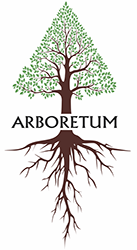Sequoiadendron
The largest living organism on Earth is the Giant Sequoiadendron (Sequoiadendron Giganteum). Also, this species is among the most long-lived. Some of the living specimens, according to various methods, are estimated to be between 2000 and 3200 years old. Some researchers are of the opinion that Sequoiadendron can live up to 4-6 thousand years.
Sequoiadendrons was widespread in the Northern Hemisphere before the Great Ice Age. Today, the natural range of these giants remained only in the Sierra Lyon mountains, in California, in the western United States. Sequoiadendrons grow there between 1500 and 2000 m above sea level. Most of the currently known trees are protected and are located in the US National Parks. The breed is included in the Red Book and is considered endangered. These trees are also called Wellingtonia, Sequoia, Giant Sequoia, Big Tree, Mammoth Tree...
Sequoiadendrons were massively felled until around 1930 because of their red wood. It is of soft density, does not burn, does not rot and is very decorative. Used for furniture, crafts and other wood products.
Sequoiadendron belongs to slow-growing breeds, especially the first 10-15 years. Withstands short-term frosts down to -25. Prefers loose, deep soils, but even in limestone it feels normal. The weak point of Sequoiadendrons is their superficial root system. Therefore, you cannot walk, stand, sit under them ... Sequoiadendron cones are small in size, ripen by the end of the second year of the growing season.
When I. Ilf and E. Petrov, invited to America, visited Sequoia Park, they wrote the following: “... we drove through an ancient gloomy forest, a fantastic forest, where the word“ man ”ceases to sound proudly, and only one word sounds proudly - “Tree ...”, I wanted to imagine that these trees grew peacefully, when not only Columbus, but also Caesar, and Alexander the Great, and even the Egyptian king Tutankhamun was not in the world ... ”.
Botanical Gardens, Arboretums and private collectors-enthusiasts have long been engaged in the introduction of Sequoiadendron in Europe and in other regions. In the Old World there are specimens over 150 years old. Most of them bear fruit and give viable seeds, which indicates the successful acclimatization of the breed in the European climate.
Gennady Daniilovich Yaroslavtsev was among the first to introduce the Sequoias in the USSR on the science base. During his work in the Nikitsky Botanical Garden, Yaroslavtsev carried out a serious scientific work of the world level, laid several groves of Sequoiadendron and other rare conifers in the mountains of the Crimea and the Caucasus. I sent cuttings of my selection to all Bot. The gardens of the USSR, where the introduction of the Sequoiadendron had a perspective, accompanying the seedlings with detailed instructions and manuals under their own authorship. His scientific works and publications have received the highest marks at the international level, and the experiments begun are continued by his students and followers to this day. After all, human life is just a short period in comparison with the life span of Sequoiadendrons, and most of the trees grown by it have only recently entered the fruiting age ...
There are 5+ exemplares of Sequoiadenrons in Moldova. All of them are young trees in the Bot Garden and in the Arboretum, at least one of them is from Yaroslavtsev's cuttings. There are data on several copies in private collections. In 2021, the ARBORETUM.LIVE project began a program for the cultivation of Sequoiadendron in Moldova from acclimatized seeds from different European countries and by cuttings according to the Yaroslavtsev method.


